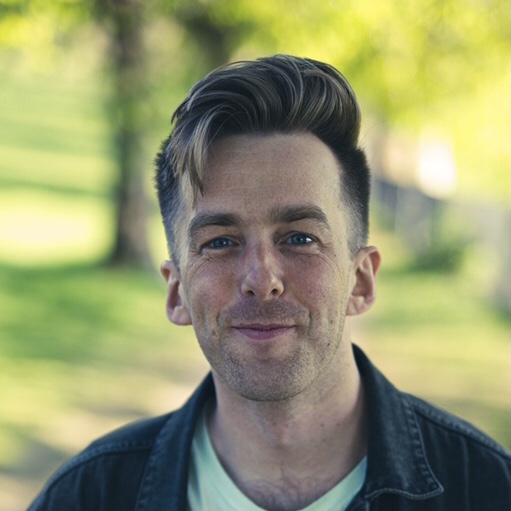How artists can overcome imposter syndrome

Self-doubt can strike anyone in any industry, but creatives in particular are closely associated with images of internal conflict. Is there truth behind the stereotype of the tortured artist finally emerging from their studio clutching a work of brilliance, and if so, where does it come from? Most importantly of all, how can artists deal with self-doubt?
Like most stereotypes, the idea of the troubled artist is neither nuanced nor useful. However, it does tap into a struggle that artists at every stage of their career appear to have to deal with. Even the best art techniques won’t help you outrun confidence issues, and nor will the best pencils or drawing apps.
“Once I reached a point where I was making a living with my artwork and went full time, the doubts began to set in,” says artist and illustrator Kelly McKernan, whose “fake it ‘til you make it” attitude wore off when she started to rub shoulders with artists at the top of their game. “The prevailing feeling went from inspiration to shame. I truly didn’t feel like I belonged.”

Comic artist and illustrator Adam Hughes has worked for the biggest publishers in the business, and even he still wrestles with feelings of doubt. “It’s never changed, but I just do the work,” he reveals. “Not as quickly as if I was burning with confidence, but I get it done. That’s the only real issue: do your doubts actually stop you in your artistic tracks?”
For McKernan, this proactive approach forced her to confront insecurities about the work she was creating. “I took a hard look at my work, recognised that much of it felt shallow to me, and began taking steps to create more personally fulfilling work that addresses and explores my experiences,” she says.
Imposter syndrome
In a cruel twist of logic, overworking is a sign that an artist could be experiencing impostor syndrome. This is the condition where a person feels like they could be exposed as a fraud at any moment.
“The nature of creative work makes everyone more vulnerable to feeling inadequate and even more so if you are not classically trained,” explains author and impostor syndrome expert Dr Valerie Young.
Daily design news, reviews, how-tos and more, as picked by the editors.

“For one, your work is highly public. Not only are you defined by it, but by artistic and literary standards that are completely subjective. It’s a challenge to maintain a consistent level of confidence when you know you’re only as good as your last painting. Meanwhile, confidence can cause you to question yourself even more because the reactions of those around you can be so skewed.”
To conquer these nagging feelings of fraudulence, Young advises that you normalise them and reframe the idea of failure. “If you want to stop feeling like an impostor, you have to stop thinking like an impostor.”
A positive attitude is what helps entertainment industry design veteran Feng Zhu cope with the pressures of dealing with a client. “I remind myself that clients are coming to me because they liked my previous work. So, I just need to do what I do, instead of trying to become, match or out-do someone else.

“Design what you love best. You don’t need to follow trends or do concept art for the sake of popularity. Don’t worry about what others will think. If you’re doing something you love, self-doubt and negative energy quickly fades away.”
For illustrator Miles Johnston, embracing failure is an inevitable part of trying to do anything worthwhile. “Failure is a necessary part of the process of growing as an artist,” he argues.
“It’s also incredibly difficult to have a truly objective view of your own work. I think a lot of people slip into the false idea that when they see something good in their work, this is wishful thinking, and when they see the bad, now they’re truly being objective. Instead, keep your focus and passion on the work at hand.”
Social anxiety
Concentrating on your own work and accomplishments is easier said than done, especially when you add social media into the mix. With plenty of artists using Facebook, Twitter and Instagram to share their art, it’s all too easy to get bogged down if your own work doesn’t perform. This can lead to artists focusing on failure in the wrong way.

Hughes remains forthright with his advice. “If sharing your work catastrophises anything, maybe you’re in the wrong line of work. You can be fragile as long as you keep drawing. If feedback of any kind wrecks you, then maybe reconsider sharing your talent publicly. Many artists create just for themselves.”
Johnston takes the opposite approach, and encourages artists to put their work out there all the time. “I think being afraid to show your artwork ultimately comes down to a kind of ego,” he says. “If people see you improve over time, then your old work won’t be embarrassing or hold you back. Instead, it’ll make people more inspired and interested in your journey.”
Thinking positive
When handled well, apparently negative thoughts and observations can urge artists on to higher ground. “Imperfections (do not call them failures!) inform your future work,” says McKernan. “Successes are the results of every piece that you’ve completed before, and that’s something to be proud of because it represents personal growth.”
Artist and teacher Vanessa Lemen is of the same mind, as she gets to the root of how a fear of failure can be useful. “The aspect of self-doubt that stems from being challenged and comes from the understanding that there are an infinite number of things that we don’t know – that the possibilities are endless, and that there is so much out there that we have yet to learn – can definitely play a positive role in the betterment of ourselves and our art.”

Meanwhile, Hughes observes “any artist who loves their own work too much isn’t inclined to improve. I feel a little self-loathing goes a long way towards improving one’s self. Dissatisfaction is a great motivator.”
Johnston agrees that dissatisfaction can push people to better work, but the secret is to develop positive habits so self-esteem will come naturally. “It’s a meaningful and fulfilling life to get to do this every day,” he says. “I love my job and don’t regret a minute spent drawing.”
This article originally appeared in ImagineFX in 2018; subscribe to ImagineFX here.
Related articles:

Dom Carter is a freelance writer who specialises in art and design. Formerly a staff writer for Creative Bloq, his work has also appeared on Creative Boom and in the pages of ImagineFX, Computer Arts, 3D World, and .net. He has been a D&AD New Blood judge, and has a particular interest in picture books.
